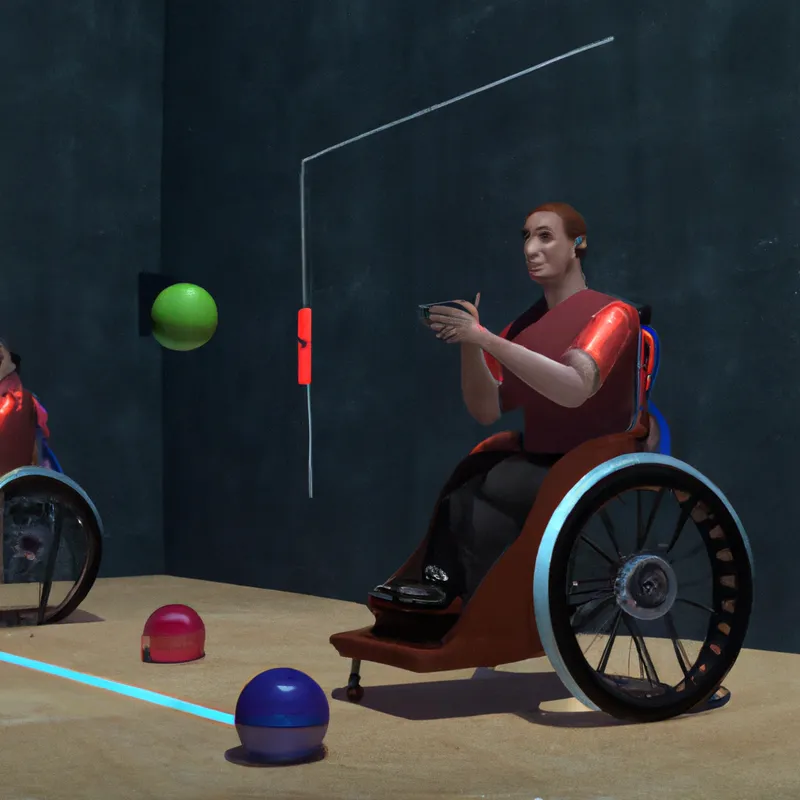Challenge Boundaries in Virtual Sports Competitions
The Future of Virtual Adaptive Sports Competitions
Sports evolve rapidly, and technology drives virtual adaptive sports competitions. These events empower athletes with disabilities to showcase their talents globally. They break geographical barriers and promote inclusivity. This blog post explores the future of these competitions, the technologies behind them, their benefits, and ways to enhance their impact.
Embracing New Technologies
Technology shapes virtual adaptive sports. Innovations in virtual reality (VR) and augmented reality (AR) create immersive experiences. For example, VR can transport athletes to simulated arenas for practice and competition. This enhances their skills and experiences.
Wearable technology also advances rapidly. Devices like smartwatches and fitness trackers monitor athletes’ movements and heart rates. This data helps coaches provide personalized feedback and refine athletes’ techniques. As technology advances, artificial intelligence (AI) will create tailored training programs based on performance metrics.
Building Community Connections
Virtual adaptive sports competitions foster a strong sense of community. Participants from various regions interact in real-time, sharing experiences and encouragement. This connection is vital for athletes who feel isolated due to disabilities.
Competitions often feature chat options, live streaming, and social media integration. Athletes engage with fans, share their journeys, and celebrate successes. This interaction boosts motivation and creates lasting friendships and support networks.
Tips for Organizing Virtual Events
Organizers should follow these tips to maximize the impact of virtual adaptive sports competitions:
1. **Choose the Right Platform**: Select a user-friendly platform that supports live streaming and interactive features. Ensure accessibility for individuals with disabilities.
2. **Promote the Event**: Use social media, community forums, and email newsletters to advertise the competition. Collaborate with local organizations and schools to encourage participation.
3. **Incorporate Variety**: Offer different sports or activities to attract diverse participants. Include adaptive versions of popular games like basketball, soccer, and swimming.
4. **Ensure Accessibility**: Ensure your platform accommodates athletes with various disabilities. Provide options for participants to compete in ways that suit their needs.
Advice for Athletes
Participating in virtual adaptive sports competitions can be rewarding. Here are practical tips for athletes to enhance their performance:
1. **Set Clear Goals**: Define specific, achievable goals for each competition.
2. **Practice Regularly**: Dedicate time to practice and improve your skills.
3. **Stay Connected**: Engage with fellow athletes for support and motivation.
4. **Seek Feedback**: Ask coaches and peers for constructive feedback to refine your techniques.
Conclusion
Virtual adaptive sports competitions hold great potential for the future. By embracing technology and fostering community, we can create inclusive, impactful experiences for athletes worldwide.
Below are related products based on this post:
FAQ
What technologies are being used in virtual adaptive sports competitions?
Virtual adaptive sports competitions utilize innovations such as virtual reality (VR) and augmented reality (AR) to create immersive experiences for athletes. Additionally, wearable technology like smartwatches and fitness trackers monitors athletes’ movements and heart rates, while artificial intelligence (AI) helps develop tailored training programs based on performance metrics.
How do virtual adaptive sports competitions help build community connections?
These competitions foster a sense of community by allowing participants from various regions to interact in real-time. Features such as chat options, live streaming, and social media integration enable athletes to share their experiences, engage with fans, and celebrate successes, ultimately creating lasting friendships and support networks.
What tips can organizers follow to enhance virtual adaptive sports events?
Organizers should select user-friendly platforms that support accessibility, promote events through social media and local organizations, offer a variety of sports to attract diverse participants, and ensure that the competition accommodates athletes with different disabilities to maximize impact.















Post Comment